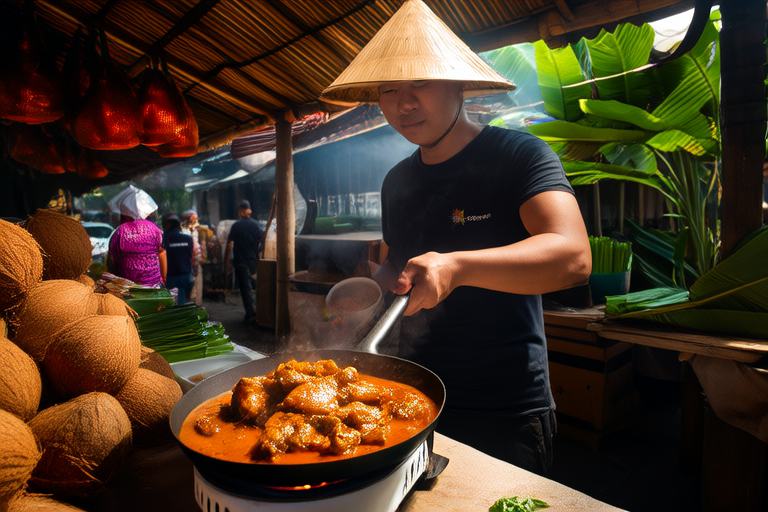Cooking Around the World: Local Flavors in Every Destination

Cooking Around the World: Local Flavors in Every Destination
Introduction
Culinary tourism is more than just eating; it’s about immersing oneself in the rich tapestry of a destination’s cultural heritage. When we taste local flavors, we gain deeper insights into the history, traditions, and daily life of a place. From the bustling streets of Tokyo to the serene landscapes of Tuscany, food is often the most authentic way to experience a new culture. It’s no surprise, then, that culinary tourism has become increasingly popular among travelers seeking memorable and meaningful experiences.
Local flavors are essential because they offer a direct connection to the people and places you visit. Whether it’s savoring a perfectly prepared risotto in Italy or indulging in a spicy curry in India, every bite tells a story. By embracing these culinary traditions, travelers not only enjoy delicious meals but also foster cross-cultural understanding and respect.
Global Culinary Landmarks
Iconic global cuisines like Italian, Japanese, and Indian have left indelible marks on the world’s gastronomic landscape. Each offers unique dishes and ingredients that reflect centuries of tradition and innovation.
Italian cuisine, with its emphasis on fresh, simple ingredients, is renowned for dishes such as pasta, pizza, and risotto. The use of olive oil, garlic, and herbs creates flavors that are both comforting and sophisticated. In Japan, sushi and ramen are beloved worldwide, showcasing the country’s commitment to precision and balance. Meanwhile, Indian cuisine dazzles with its bold spices and aromatic curries, offering a sensory explosion that captivates the palate.
These cuisines have influenced other parts of the world through migration, trade, and globalization. For example, Italian-American cuisine has evolved into its own distinct style, while Japanese food has become a global phenomenon with sushi bars popping up everywhere. Exploring these iconic dishes is a must for any traveler seeking to understand the essence of a culture.
Street Food Adventures
Street food provides an unparalleled opportunity to dive deep into local culture. From Mexico’s vibrant taco stands to China’s bustling dim sum carts, street food offers affordable, authentic, and often unforgettable dining experiences.
In Mexico, tacos are a staple, with countless variations featuring everything from grilled meats to fresh seafood. In China, dim sum is a social affair, where steamed buns, dumplings, and spring rolls are shared among friends and family. Similarly, kebabs in Turkey offer a taste of the Middle East, combining marinated meats with spices and vegetables on skewers.
Trying street food is one of the best ways to immerse oneself in the culture. Not only does it provide a glimpse into everyday life, but it also allows travelers to interact with locals, learning about the ingredients, preparation methods, and stories behind each dish. Street food is often the heart of a city, reflecting its soul and spirit.
Regional Specialties
Within countries, regional specialties showcase the diverse influences of geography, climate, and available resources. Take Italy, for instance, where Northern cuisine emphasizes rice dishes like risotto and polenta, while Southern Italy is famous for its tomato-based sauces and seafood. In Thailand, coastal regions rely heavily on fish and shrimp, while inland areas focus on freshwater produce and hearty curries.
Exploring these regional differences enriches the travel experience, offering a broader perspective on a country’s culinary traditions. For example, a trip to Tuscany wouldn’t be complete without sampling Chianti wine and enjoying a hearty ribollita soup, while a visit to Bangkok should include a meal at a floating market featuring fresh, local fruits and vegetables.
Culinary Workshops and Cooking Classes
For those eager to engage more deeply with local cuisine, participating in cooking classes or workshops is an excellent option. These experiences allow travelers to learn firsthand from skilled chefs and home cooks, gaining valuable insights into traditional techniques and recipes.
To find reputable instructors, look for recommendations from trusted sources such as travel guides, hotel concierges, or fellow travelers. Many destinations offer hands-on cooking classes where participants can prepare a full meal, from appetizers to desserts. Expect to learn about ingredient selection, knife skills, and cooking methods specific to the region.
During these workshops, you’ll likely be introduced to local ingredients and spices, gaining a deeper appreciation for the flavors and aromas that define a cuisine. Cooking together fosters community and connection, making these experiences truly memorable.
Sustainable Eating While Traveling
Supporting local farmers and markets is crucial for sustainable tourism. By choosing locally sourced ingredients, travelers contribute to the preservation of traditional farming practices and help support small businesses. This not only benefits the environment but also ensures that the food being consumed is fresher and tastier.
Avoid mass-produced food options whenever possible, opting instead for meals prepared with care and attention to detail. Visiting local markets and farmstands allows you to see firsthand the variety of produce available, often inspiring new culinary adventures. Additionally, many restaurants now offer sustainable menu options, highlighting their commitment to responsible sourcing.
Conclusion
Exploring local cuisine is an invaluable way to connect with different cultures, offering insights into history, traditions, and daily life. From iconic global landmarks to regional specialties and street food adventures, every bite tells a story. By embracing the diversity of flavors around the world and approaching our travels with an open mind and appetite, we enrich our experiences and foster cross-cultural understanding.
We encourage readers to seek out local flavors wherever they go, whether it’s through formal dining experiences, casual street food outings, or immersive cooking classes. Let your taste buds lead the way as you discover the unique culinary treasures of each destination.